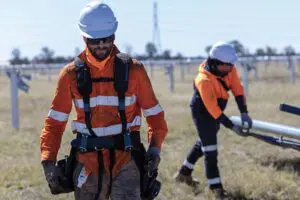Over the past three decades, efforts to mitigate carbon emissions within industrial production sectors have largely fallen short of effectively curbing the global carbon output.
Electricity generation stands out as the notable exception as it is set on a trajectory towards achieving a remarkable 90% reduction in carbon emissions through adoption of renewable energy technologies.
However, to attain sustainable levels of carbon emissions globally, it is imperative to address the high-emission nature of various consumer goods and activities. This necessitates substantial decarbonization achieved through enhanced efficiency, electrification, and curtailment strategies.
The Mortality Cost of Carbon of Items (MCCI) and Social Cost of Carbon Mortalities of Items (SCCMI) methodologies provide frameworks to assess climate-related mortality risks and monetize the associated impacts of carbon emissions from consumer items.
MCCI quantifies climate-related mortality risks in terms of fractions of a death caused by carbon emissions from the production and use of an item. SCCMI monetizes these risks in dollars per item, providing a comprehensive assessment of the social costs associated with carbon emissions.
MCCI and SCCMI methodologies allocate higher mortality costs to items with higher carbon intensity, reflecting the excessiveness of emissions from non-essential high-emission items such as fuelled motor vehicles, flights, cruises, red meats and air conditioning.
Background
Personal consumption currently contributes approximately two-thirds of global carbon emissions. If left unchecked, this will lead to a potentially catastrophic 4°C of warming by 2100 (see Figure 1).
To avert such a scenario and achieve net-zero carbon emissions by 2050, it is imperative to prevent further escalation of CO2 levels in the atmosphere (illustrated by the blue dashed line in Figure 1 below).
To achieve this, global emissions will have to be halved. This demands that every individual worldwide attains a sustainable carbon footprint (SCF) of 2 tCO2e per year by no later than 2040.
This ambitious goal is attainable primarily through the adoption of existing technologies that enable shifts in consumption patterns. Subsequent advancements in technology may further drive emissions reduction towards net zero. Notably, in 2023, emissions from personal transport alone typically exceed three times the SCF.
Achieving sustainable carbon footprints hinges on modifying and curtailing the consumption of high-emission consumer items prevalent today.
Personal vehicles – especially those powered by fossil fuels, red meats, flights/cruises, and air conditioning (in that order) collectively constitute about 60% of the 12 tCO2/yr carbon footprints attributed to the 1.5 billion people who engage in these activities.
Without significant adjustments to these consumption patterns, the task of achieving sustainable carbon footprints would prove insurmountable. On the other hand, if all consumers substantially curtail consumption of these high emitting, non-essential items, global emissions could be reduced by more than a third.

Mortality Cost of Carbon of an Item (MCCI) y
MCCI can be estimated for any item, as described in recently published research. First a Mortality Cost of Carbon rate (MCCR) is estimated for the item, according to its carbon intensity.
MCCRs are the fraction of a death likely to occur over 80 years from all climate related causes from the emission of 1 ton of CO2e, assuming specified future temperature trajectories. The unit of MCCR is deaths per tCO2.
An exponential MCCR trendline is constructed through two benchmark MCCRs, which are determined by scientific research.
The two benchmark MCCRs estimated by Rose, 2023 are based on figures estimated by Bressler, 2021, from 3 studies he selected from 100 peer reviewed research studies examining the effect of climate on health and mortality. Bressler estimated temperature related excess deaths likely to occur under two emissions scenarios with corresponding temperature trajectories.
The base case ‘business as usual’ scenario, where there is no change in the current rate of emissions results in of 4.1 C warming by 2100. The ‘optimal case’ scenario, where net zero carbon emissions is achieved by 2050 results in 2.4 C warming by 2100.
To account for other climate-related deaths from under-nutrition, diseases, floods, wildfires and conflicts Bressler’s figures were multiplied by three to give two benchmark MCCRs.
The base case scenario incurred 6.78x 10-4, (with uncertainty -50% – +90%), which equates to about one death per 1500 tons of CO2 emitted. The optimal scenario incurred 3.21 x 10-4 deaths per tCO2 emitted in 2020, equating to about one death per 3100 tons of CO2. MCCRs for items are allocated on the MCCR trendline according their carbon intensity.
The example shown in Figure 2 below shows MCCR allocation for the items ‘annualized personal transport alternatives. Electrified public transport (PT) and E-bikes are deemed to be ‘best practice low carbon transport’ and allocated the optimal case scenario MCCR value (lowest point on the curve).
‘Fleet average 2020’ is allocated the ‘business as usual’ MCCR value. The micro EV vehicle type falls on the exponential MCCR curve according to its emissions, slightly higher than PT and bikes. Similarly, the large ICE 4wd vehicle type falls on the curve at a MCCR value significantly higher than ‘fleet average’.

Mortality cost of an Item (MCCI) is then calculated according to the simple formula:
MCCI = (Full cycle operational plus embodied CO2 emissions of item) * allocated MCCR.
Social Cost of Carbon Mortalities of an Item (SCCMI) methodology
Multiplying MCCR by a global Value of a Statistical Life (VSLY) and amortizing over 80 years at 2.5% gives Social Cost of Carbon Mortality Rate (SCCMR).
As CO2 deaths occur globally, a global VSLY of $48,000 was used. The unit of SCCMR is US$/ tCO2. The two benchmark SCCMRs were $663/ tCO2 for the base case scenario and $405/ tCO2 for the optimal case scenario, with uncertainty -50% to +90%.
SCCMRs for the other vehicle nodes were allocated along the SCCMR exponential trendline running through the two baseline points according to carbon intensity of the personal transport type (as for MCCR).

Social cost of carbon of an Item (SCCMI) is then calculated according to the simple formula:
SCCMI = (Full cycle operational plus embodied CO2 emissions of item) * allocated SCCMR .
Using MCCI and SCCMI to change consumption patterns
The practical applications of MCCI and SCCMI reverberate across diverse domains, with implications for government policies, consumer behaviour, and corporate strategies.
From consumer awareness campaigns to the formulation of targeted carbon reduction policies, the methodologies have the potential to underpin a spectrum of interventions aimed at mitigating climate risks and fostering sustainable consumption patterns.
Policies implemented in Australia, aimed at reducing smoking rates offer a compelling template. This campaign began with a comprehensive multimedia awareness initiative, shedding light on the health hazards associated with smoking.
Subsequently, restrictions were imposed on smoking locations, followed by curtailment measures and ultimately the prohibition of advertising, along with significant increases in tobacco taxes. Smoking rates have halved since 2001 and are now only 10%.
Similarly, a parallel strategy could be employed to tackle mega carbon-emitting items and behaviours. By raising awareness through multimedia channels, emphasizing the health and environmental impacts, and implementing restrictions on carbon-intensive activities, we can pave the way for sustainable change.
Just as with the anti-smoking campaign, targeted efforts to limit advertising and impose taxes on high-emission products can play a crucial role in fostering a shift towards more sustainable practices and behaviours.
Carbon pollution sales taxes could be applied to items according to SCCMI. For example, electrified public transport and E-bikes are the least carbon intensive personal transport alternatives and would incur zero social carbon mortality tax.
Large 4WD SUVs being the most carbon polluting form of personal transport would incur high carbon mortality taxes. Revenues raised could be spent on subsidizing low carbon alternatives so there need be no net increase in taxation. This will be explained in my next article.
Ben Rose is a Perth-based energy and emissions analyst.










